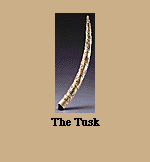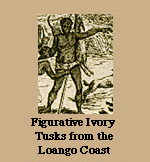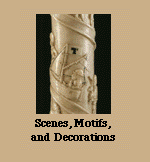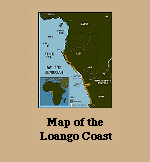

|
|
|
|||

Ivory tusk |
A figurative Ivory tusk from the Loango coast--dating possibly from the mid to late 1800s and acquired by the National Museum of African Art in 1996--is a striking example of the Loango artistic tradition, The artist probably used iron tools to carve relief figures into the two-foot tusk. The figures, rendered in exquisite detail with lively animation, move up the tusk in a spiral, creating a pictorial narrative composed of individual scenes about everyday Loango life during the latter half of the 1880s. The scenes on the tusk are separate vignettes meant to convey the essence of Kongo life and beliefs as perceived by Kongo peoples on the Loango coast during a time of transition. They are not meant to be read as a continuous narrative. By modeling the body positions, gestures, and facial expressions in a realistic manner, the artist adhered to the artistic traditions set forth in Kongo art, which is known for its naturalism. |
||

|

|

|

|
|
Back to: NMAfA past exhibits |
|||